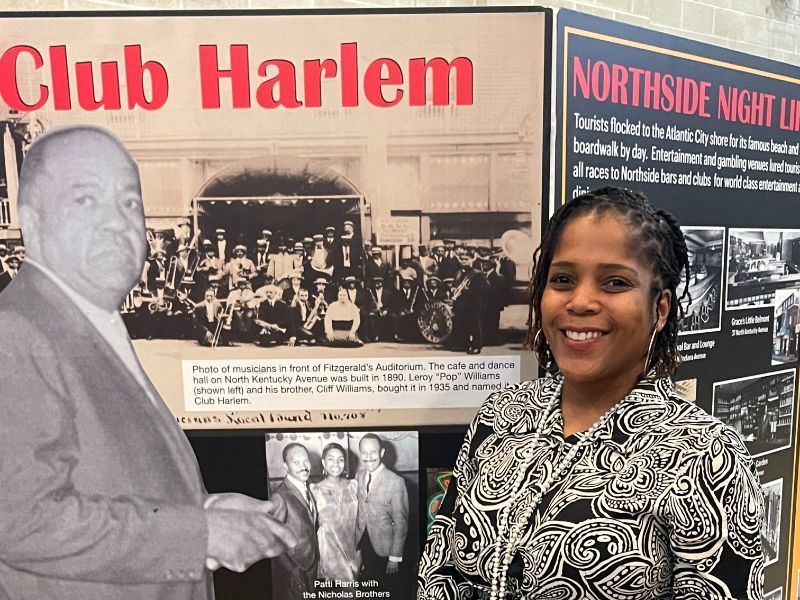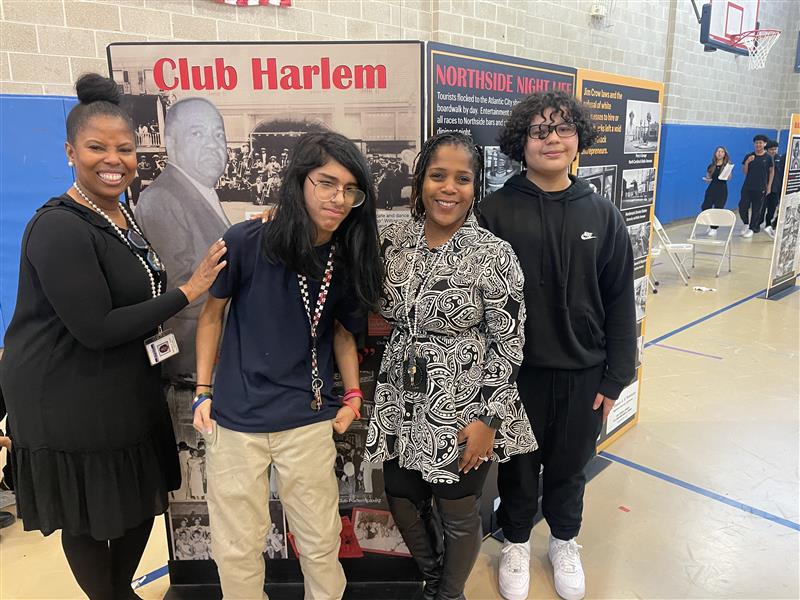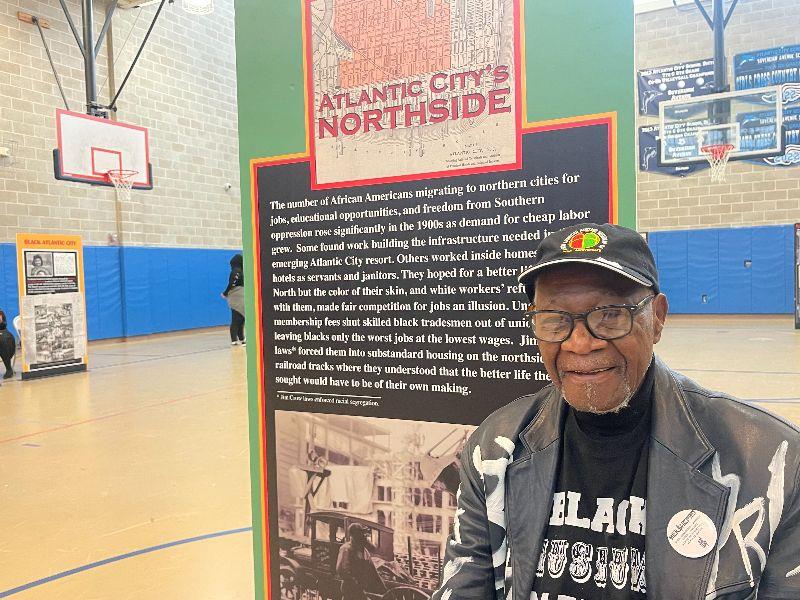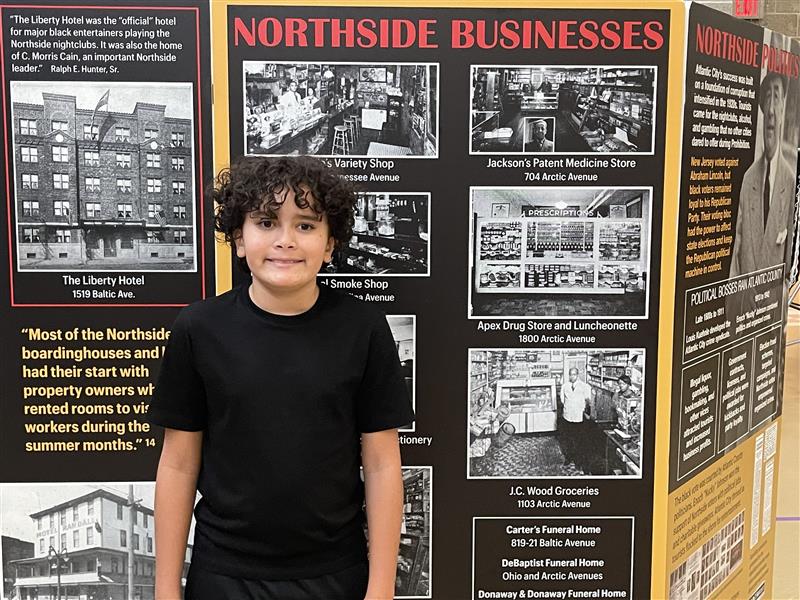Mobile African American Museum Stops at Sovereign Avenue School
ATLANTIC CITY — The African American Heritage Museum of Southern New Jersey, Inc. brought its mobile exhibit "Atlantic City's Northside: Redlining in the Sand" to the Sovereign Avenue School on Wednesday, February 28, 2024, in honor of Black History Month.

Museum Founder Ralph E. Hunter, Sr., Principal Nicole Williams, and teacher Darchele Scott encouraged the students to serve as presenters. “The students were exposed to some new information that is right in their backyard,” said Williams. “This moment is priceless.”

Students stood in front of exhibit boards and passionately shared information, engaging their peer audiences. Some 800 students rotated through different stations in the school’s gymnasium throughout the day to learn about various aspects of Atlantic City life. Exhibits included Role Models, Separate but Equal, Club Harlem, Northside Nightlife, Northside Beauty, Northside Politics, Leadership, Northside Businesses, and others. Hunter said Atlantic City’s story is still influenced by the redlining that occurred so long ago. There were areas where Black people were not allowed to live, but they developed what they had into a thriving, self-sustaining community.

“They were forced to live in an area that was redlined. They couldn’t buy a house in Margate, Ventnor, or Longport, or even in areas like Chelsea or Ducktown,” Hunter explained. “They were forced to buy homes and rent homes on the Northside of town where they had the problem of only going to a school that was provided in that redlined district.”
That meant Atlantic City’s Black community went to either Indiana Avenue School, where one building was solely dedicated to teaching African American girls to become beauticians and other things in the domestic science field, or New Jersey Avenue School.
Meanwhile, white students went to other schools. “The only thing that was integrated was the school for boys where they taught auto mechanics, print making and all the trades for guys who weren’t going to go off to college, but start their own businesses,” Hunter said. “It was really quite grand because a lot of those kids came back to their area and opened up their own businesses. It was really amazing.”
"The amount of history that comes from such a small geographic area is amazing," said eighth grade mathematics teacher Greg Coughlin. "It was almost like there were two separate towns."
Adrian Lopez, who is in seventh grade, was a presenter at the Northside Businesses exhibit.

“I learned a lot about the stores back in the day and how they operated,” said Lopez. “All those stores were run by Black people. It is surprising because all the buildings are gone now.”
Scott, who organized the exhibit, said the mobile museum brought to life stories she had heard for years. “This was a huge eye-opener for me,” Scott said. Scott’s parents went to see James Brown at the Club Harlem when her mother was pregnant. Her mom went into false-labor and wound up being ushered into the club. Her water didn’t break, so they got a front row seat to see The Godfather of Soul.
“I used to hear these stories all the time,” Scott said. “But I had no idea.” Williams, also an Atlantic City native, said her family history too connects with the history of the Northside. “My aunt learned to sew at the Indiana Avenue vocational school,” Williams said. “My dad worked at Club Harlem.”
Hunter said that even prior to the Great Migration, which was the relocation of about 6 million Black Americans from the rural South to the cities of the Midwest, West and North from about 1916 to about 1970, Black people left the South to find better jobs. They landed in places such as the South Side of Chicago, Gary, Indiana, Harlem, New York, and Atlantic City’s Northside. “Atlantic City had its own hotels, restaurants, boarding houses and any business that was necessary to survive,” Hunter said. “So, you ask yourself, was that a good thing or a bad thing and why? I’ll leave that decision to you.”

